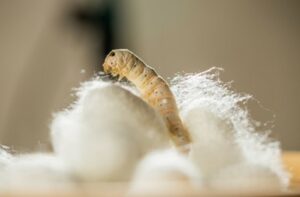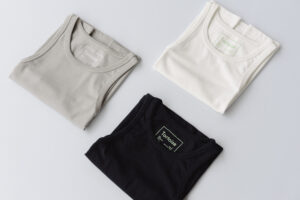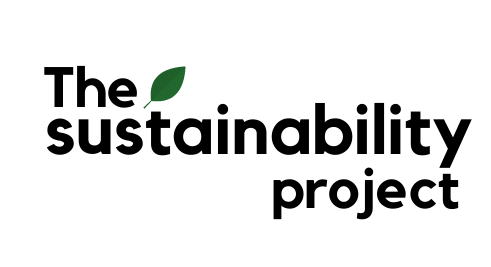Children. Animals. You. That’s what one single thread of fabric fibre can cost morally. Be it natural fibre or synthetic fibre, they both have their fair share of social costs.
“Wait, then am I contributing to moral costs too?”
In some way, yes. However, as consumers, we will never know exactly which piece of clothing in the store promises moral rights. There is so much being filtered & concealed down the supply chain.
And that’s why in this last series of Natural vs Synthetic Fibres, we are going to dig deep into the unspoken truth behind the various fibre industries & learn how we can be a more socially-conscious consumer!
Natural vs Synthetic: Which is more ethical?
Answer: we don’t know…
While we cannot weigh the social impact on children, animals and men, shall we draw an example from each category of fibres? Let’s start with plant fibres – cotton!
(Plant-Based) Cotton Fibres: do they promise human rights?
The OG fabric that everyone has clothing made up of. It’s in everything from our jeans, sweaters, t-shirts or even cotton buds. But unfortunately, the natural fibre is not as ethical nor sustainable as it seems. Your soft & fluffy cotton apparel do not steer clear of human costs and it’s time we know that not all-natural ingredients come from a sustainable supply chain.

Did you know cotton child workers in India are paid a measly $2 per day? These children, as young as 10, sacrificed their playtime & education in exchange for money to put food on the table. Seeding, picking and ginning cotton, children are at every stage of the cotton production process.
Just imagine yourself as a 10-year-old, spending your day picking cotton in the factory, engulfed in thick cotton dust, overwhelmed by the blaring machinery noise, as though you are going through a snowstorm. I really cannot imagine how afraid I’d be. Not to mention that forced labour is also apparent in the Xinjiang cotton industry. Behind your stylish pair of jeans, many vulnerable people are being exploited.
“Ok but they are plant-based, using them is eco-friendly & it shouldn’t hurt the planet”
Well, it’s true to a certain extent, but overusing them DOES drain our resources. Cotton agriculture is not as beautiful as it seems. A cotton plant requires lots of suns, a long period without frost and a good amount of rain to grow. In fact, cotton is one of the thirstiest crops.
Just one kilogram of cotton fabric generates 10,000 litres of water footprint. That being said, your pair of jeans would cost 8,000 litres of water. So where does the water come from? Surface and ground waters are often diverted to irrigate cotton fields. This could cause freshwater loss through evaporation. Besides, this irrigation system can runoff artificial fertilisers & pesticides, contaminating water bodies and endangering marine life, people and pets.
Fun fact: The difference between organic and non-organic cotton is that there is no use of pesticides or other harmful chemicals. Non-organic cotton is grown on the same field repeatedly, degrading the soil quality, removing nutrients and leading to unhealthy crops.
(Animal-Based) Silk Fibres: Is silk farming a form of animal cruelty?
Girls, I know we all love those majestic & exquisite wedding dresses and evening ballroom gowns. Ah, that princess dream of ours, I’m pretty sure we’ve wished to be Cinderella before (at least for me haha).
But behind those beautiful silky dresses, you should’ve already known that silkworms die during production. Silkworms are either boiled or gassed alive inside their cocoons –the outer casings that protect them before they bloom into moths.
 Credits to: Discover Magazine
Credits to: Discover Magazine
“But they’re just worms”. Uh-uh, that’s not true. Silkworms play an important role in maintaining ecological balance. Without them, it throws the ecosystem into haywire.
Yes, worms don’t scream nor cry in distress. Neither do they look and age like us. But just like you and me, silkworms have feelings, nervous systems and brains. They’re insects who feel pain – just like any other living being.
Can you imagine how many petrified silkworms gave their lives to our luxury dresses, considering that one can only produce 0.18 grams of silk?
Fun fact: Cruelty-free silk is also available in the market (but a small percentage)! Ahima silk often termed as peace silk, allows silkworms to bloom into moths before harvesting. They’re also manufactured under stringent social and environmental standards in India.
(Plastic-Based) Polyester Fibres: how dangerous are toxins on our clothing?
Very dangerous. Most polyester fibres are manufactured using antimony as a catalyst – a carcinogen toxic to the heart, lungs and skin. Not just that, it emits chemical substances like nitrous oxide (a greenhouse gas also known as laughing gas) into the water & atmosphere.
Ever wonder why clothes made from polyester are so durable, wrinkle-free & stain-resistant? This is because they contain perfluorochemicals (PFCs) – a group of chemicals used to make fluoropolymer coatings to resist heat, oil, stains, grease & water.
By wearing polyester clothing, you don’t just breathe in plastic; your skin is also absorbing these chemicals. In fact, PFCs accumulate in your body over time & sparks health concerns including liver toxicity, developmental changes, immune system alternations & risk of cancer.
Being a Conscious Fashion Consumer
Since every fibre has its own downsides, how can we be more conscious while shopping?
Read more: A Guide to Sustainable Shopping

If you’d ask me, I’d say enjoy shopping in moderation. The truth is, there is no such thing as 100% sustainable fabric or zero-waste clothes.
No apparel in the world promises zero environmental impact, because every material & every fibre is a resource used. But if we make a conscious effort to shop less frequently, we can lighten our load on our planet.
It can be as simple as reducing the number of trips you make to the fashion store, cutting down the number of times you click into that shopping app within the month.
Trust me, it’s really not about saying goodbye to shopping forever, but making small adjustments to make conscious shopping more sustainable for you.
Never underestimate these little changes. Individually they may seem like a tiny drop of water, but progressively it’s an ocean that makes waves!
An Emerging Sustainability Brand
If you can’t resist the urge to splurge, you can always opt for sustainable fashion brands that minimise their resource use & carbon footprint!
For instance, Tortoise The Label retails basic wardrobe essentials made from only one type of fibre – organic cotton. This way, when you do send your used Tortoise pieces back to the brand for recycling through their Carrot Credits Recycling System, recycling is streamlined as it skips the fibre sorting phase – a labour intensive and expensive process.
Not just that, talk about reducing & reusing delivery packaging. You’ll receive your order in a reusable tote bag parcel mailer, which works perfectly well as a mailer again when you are ready to send your used clothes back for recycling to them!

Wrapping up, I’d really hope this article serves as a magnifying glass to everyone here today, to look beyond our clothes & fibres. It’s time to start caring about what’s deep inside the apparel in our wardrobe. It’s also time to know the hidden costs within our big hauls of clothes.
Plus, if fashion empowers us to express ourselves freely, wouldn’t it be great to transform this power into a voice for Mother Earth?


💯💯